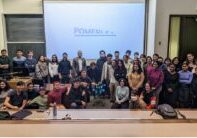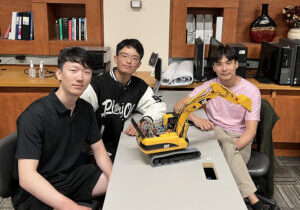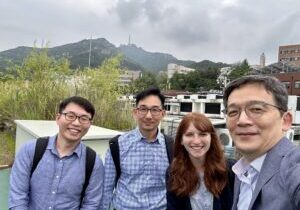
Daeho Kim
Assistant Professor
Department of Civil & Mineral Engineering
Email: civdaeho.kim@utoronto.ca
Office: SF3001C
Tel: 416-946-3505
Construction Management
Background
Professor Daeho Kim's research focus is to widen the horizon in construction by realizing the true value of co-robotic construction. His goal as a researcher is to lay a solid foundation for human-robot collaboration by establishing safe and cohesive teaming among workers and robots and reconfiguring the existing labour-intensive construction mechanism.
The construction industry is gradually gearing up to embrace a range of robotic solutions to break through the sustained suffering from low productivity, poor safety and the shortage of skilled young labourers. Equipment manufacturers have retrofitted their equipment with autonomous kits and robotics companies are releasing a variety of construction robots at varying degrees of autonomy. Construction academia is exploring new forms of robotic solutions. Imagine the successful deployment of robotic solutions. Robots will carry out repetitive and laborious tasks quickly while workers can focus on supervising robots or troubleshooting uncertainties. Such synergy from the cohesive human-robot collaboration would greatly improve the project's productivity as well as worker's ergonomics and safety. This innovation will also be a key driver to make construction jobs more intellectual and attractive to prospective workers from various range of demographics.
There is a need for scalable safety technologies at high fidelity, redesign of workspace and work process, and the development of training programs for human workers to work with robots. Accordingly, Professor Kim’s four research agendas are searching answers to the following questions: (i) How to ensure workers’ safety alongside robots at varying autonomy; (ii) How to improve workers’ physical, cognitive, and emotional comforts alongside robots, thereby having more productive and cohesive teaming between them; (ii) What the ideal work environment would it be not for human or robot, but for a human-robot crew; and (iv) How to foster a new workforce specialized in robot collaboration.
Publications
| Journal Publications |
|---|
| Kim, D., Lee, S., and Kamat, V.R. (2020) “Proximity Prediction of Mobile Objects to Prevent Contact-Driven Accidents in Co-Robotic Construction.” Journal of Computing in Civil Engineering, ASCE, Vol. 34, 04020022. |
| Kim, D., Liu, M., Lee, S., and Kamat, V.R. (2019) “Remote Proximity Monitoring between Mobile Construction Resources using Camera-Mounted UAVs.” Automation in Construction, Elsevier, Vol. 99, pp. 168-182 |
| Kim, D., Hong, T., Lee, M., Koo, C., Kim, J., and Jeong, K. (2017) “Mapping the Rescue Equipment Mobilization Potential: Decision Support Tool for Emergency Management.” Journal of Management in Engineering, ASCE, Vol. 33, 04017037. |
| Kim, C., Hong, T., Kim, J., Kim, D., and Seo, D. (2015) “A Process for the Implementation of New Renewable Energy Systems in a Building by Considering Environmental and Economic Effect.” Sustainability, MDPI, Vol. 7, pp. 12870-12890. |
| Hong, T., Koo, C., Kim, D., Lee, M., and Kim, J. (2015) “An Estimation Methodology for the Dynamic Operational Rating of a New Residential Building using the Advanced Case-Based Reasoning and Stochastic Approaches.” Applied Energy, Elsevier, Vol. 150, pp. 308-322. |
| Kim, D., Kim, J., Koo, C., and Hong, T. (2014) “An Economic and Environmental Assessment Model for Selecting the Optimal Implementation Strategy of Fuel Cell Systems-A Focus on Building Energy Policy.” Energies, MDPI, Vol. 7, pp. 5129–5150. |
| Hong, T., Kim, D., Koo, C., and Kim, J. (2014) “Framework for Establishing the Optimal Implementation Strategy of a Fuel Cell-Based Combined Heat and Power System: Focused on Multi-Family Housing Complex.” Applied Energy, Elsevier, Vol. 127, pp. 11-24. |





